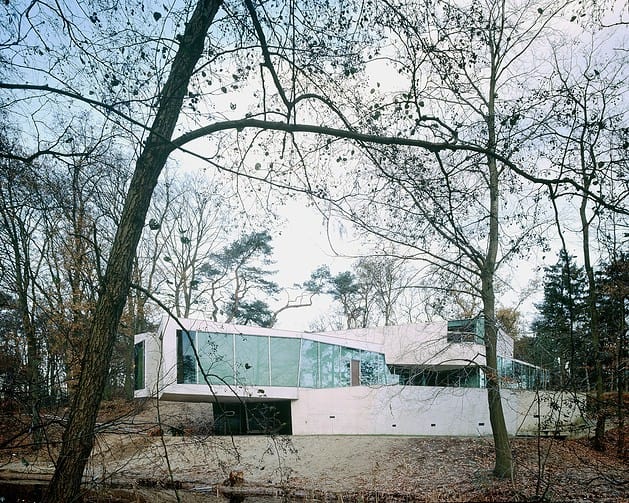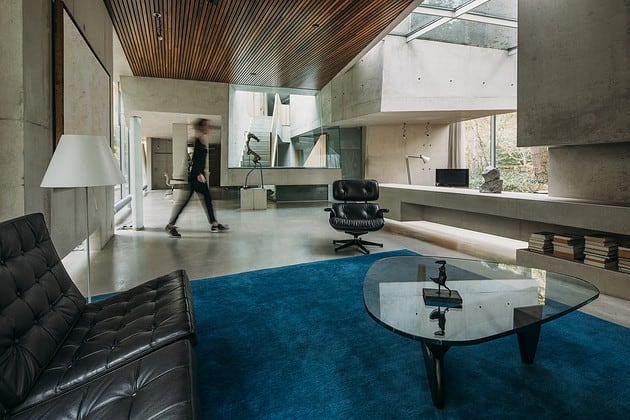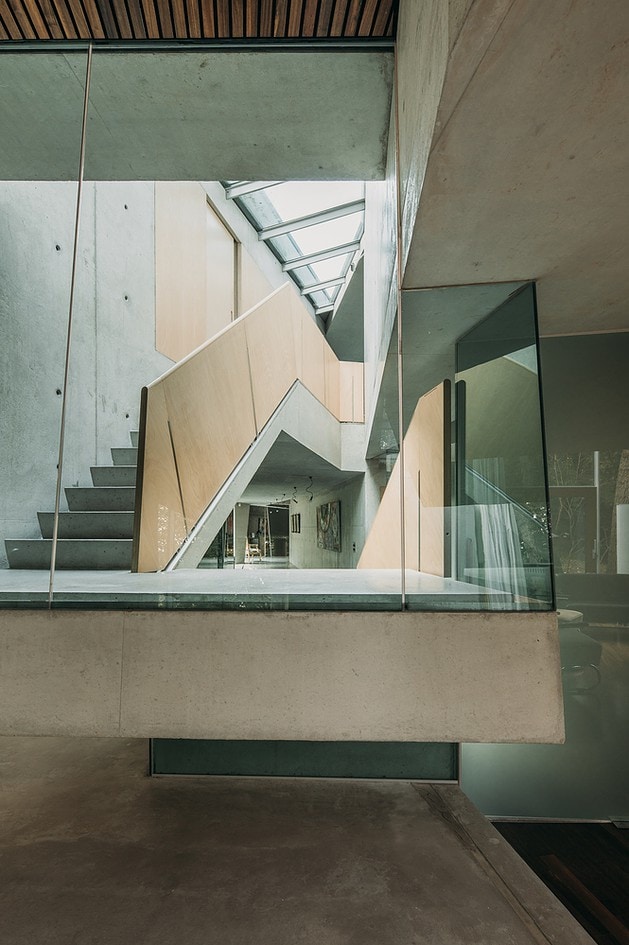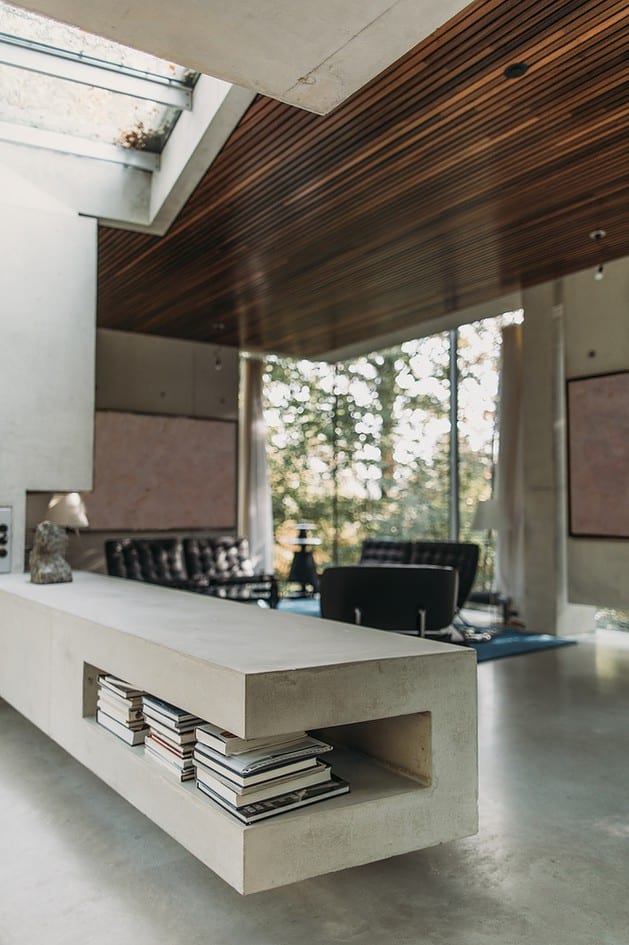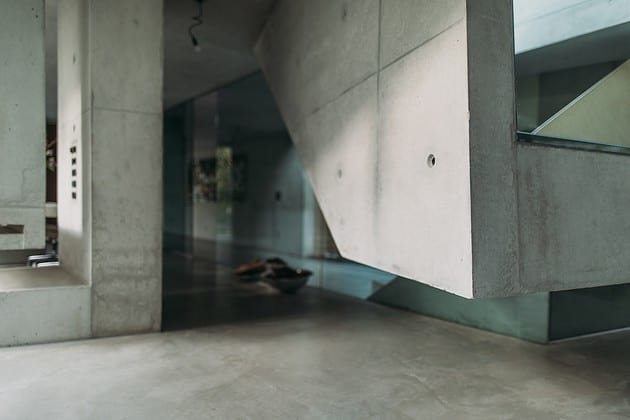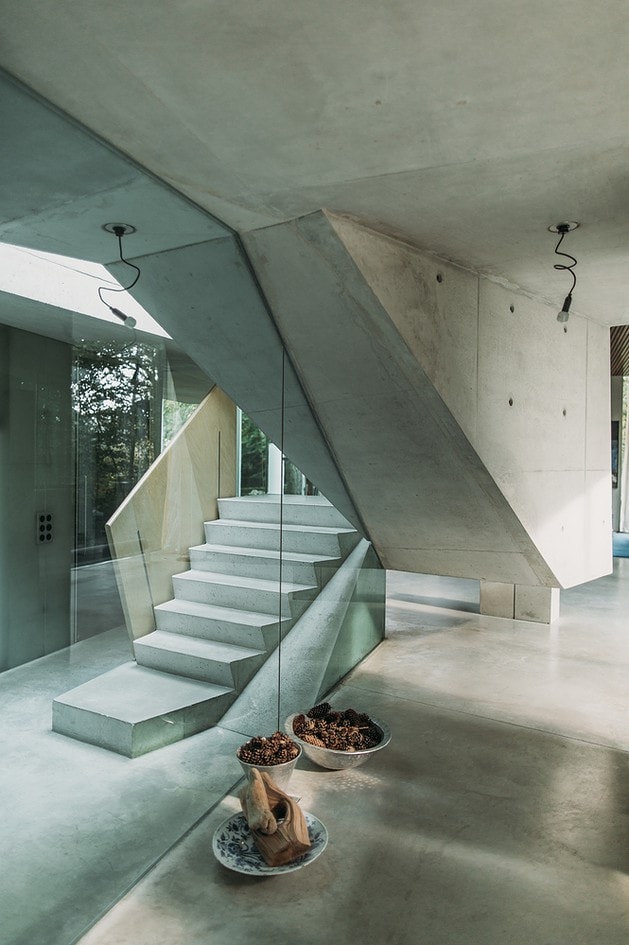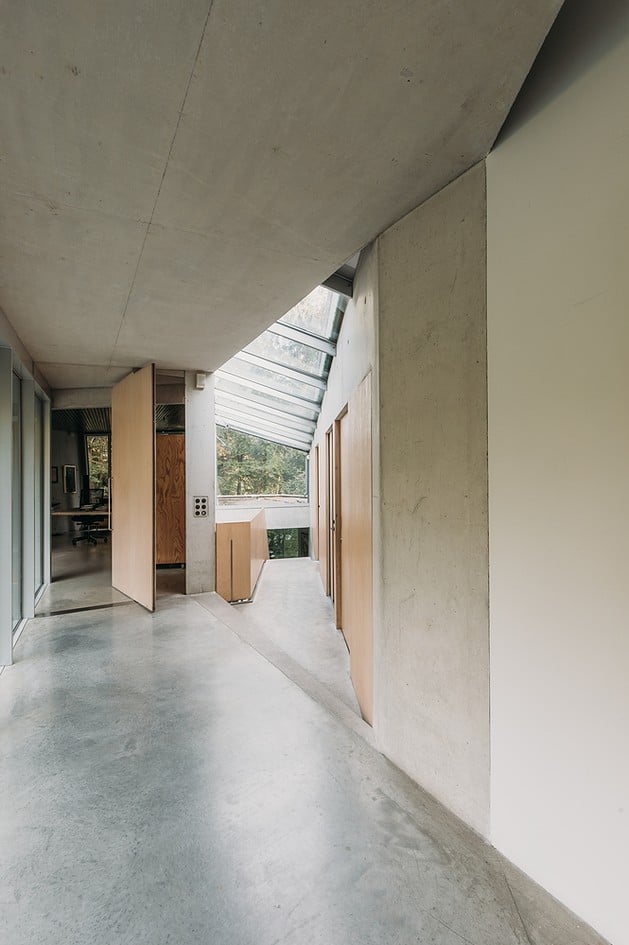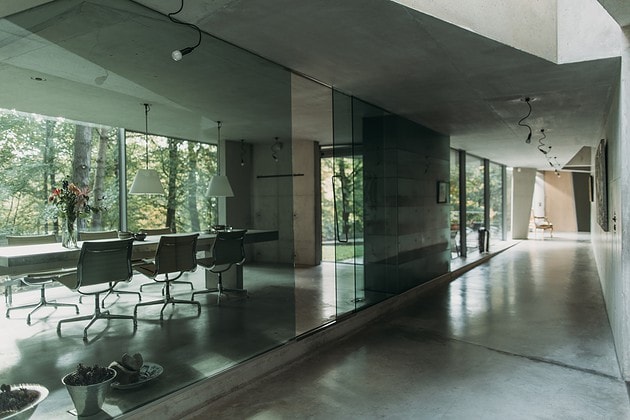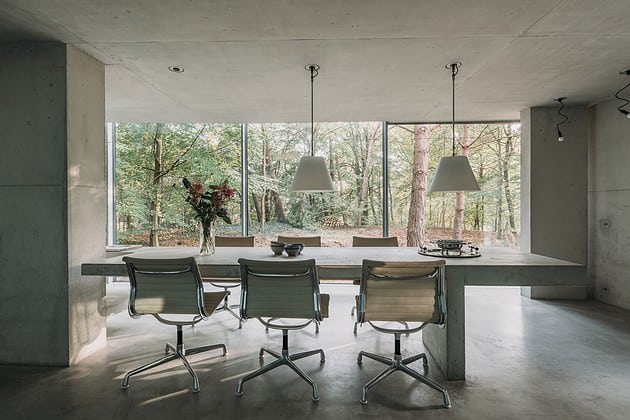Project: Möbius House
Architects: UNStudio
Location: The Netherlands
Area: 5.597 sf
Year: 1998
Photographs by: Christian Richters, Eva Bloem
Möbius House by UNStudio
In 1998, the Möbius House emerged as a groundbreaking architectural marvel in Het Gooi, conceived by Dutch architect Ben van Berkel for a visionary couple seeking a residence that defied convention.
Inspired by the Möbius loop, a single-sided surface with no boundaries, the design aimed to revolutionize spatial relationships within a family’s dynamic 24-hour living cycle. Through the innovative use of 3D computer modeling, Van Berkel and his wife, Caroline Bos, experimented with spatial ambiguity, creating fluid circulation paths that challenge traditional notions of walls and doors. The resulting structure, rendered predominantly in concrete and glass, dances between heaviness and transparency, seamlessly integrating with the natural landscape as it unfolds and transforms.
The Möbius House, celebrated internationally and showcased at the Museum of Modern Art, stands as a testament to Van Berkel’s pioneering vision, marking a pivotal moment in the trajectory of parametric design.
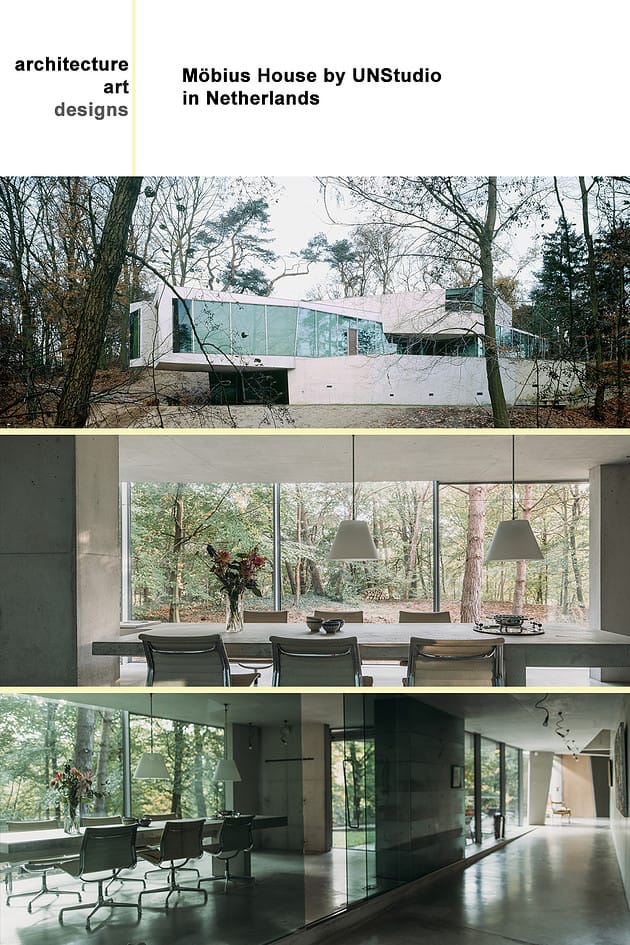
In 1993 a young professional couple from Amsterdam set out to build a private house unlike any other. They wanted to create something that “would be recognized as a reference in terms of renewal of the architectural language.” They reached out to several architects, including Rem Koolhaas, but finally decided to entrust the commission to Dutch architect Ben van Berkel after he studied the site and came up with a vision for the project, relating it to the couple’s lifestyle.
Located in Het Gooi, its design took over 5 years, going through several iterations, but always coming back to its core inspiration: the Möbius loop. The shape, defined as a single-sided surface with no boundaries, was the key to a new architectural language that aimed to weave together all the individual activities of each family member, allowing the functional program to be integrated within the dynamic structure. By 1998, when the house was completed, it became widely published and internationally recognized. It also became a sort of manifesto for its architect, as it uses an organizational principle to inform the final image.
To create this new type of architectural language that was requested, Van Berkel based his concept on his clients’ type of lifestyle. The design creates a fluid circulation between the different functions of the space, allowing for areas for work, sleep, playing, socializing, and intimacy, all defined by ambiguous boundaries. The shape of the Möbius loop thus became linked to the idea of the 24-hour living and working cycle of the family. As the loop inverts, the exterior becomes the interior and vice versa, creating a strong relationship between the house and the landscape. In the words of Van Berkel, the idea of incorporating the Möbius loop into the design originated from his “interest in mathematics, science, complexity theory, chaos theory, and topological surfaces.”
The complex design also capitalized on one of the most important innovations of the time: 3D computer modeling. While the first sketches were hand-drawn, by 1995 the design process became computerized. Van Berkel became acquainted with the new technology while working as a teacher at Columbia University, which launched its famous paperless studio in the same year. This new tool allowed for a completely different type of experimentation, fusing drawing and modeling to investigate and create new spatial effects with increasing complexities. The final image of the Möbius House is tributary to these technologies, which placed it at the forefront of parametric design at the time.
At first glance, the functional program seems modest, containing two work studios in addition to the typical elements of a private house. However, architect Ben van Berkel and his wife Caroline Bos used this opportunity to experiment with concepts of spatial ambiguity, designing two independent circulation paths that run parallel through a sequence of spaces. The concept of the Möbius strip proves useful in that it transforms the two surfaces of the strip into one continuous surface by twisting the material. This concept gains an architectural shape by allowing primary circulation paths to extend through the lengths of the longitudinal axis, opening sight lines that connect the programmed spaces. The resulting spaces rarely feature right angles as the space continuously contracts and expands in response to the daily routine of the residents.
Instead of walls and doors, the different spaces within are defined by variations in the ceiling heights. Higher spaces are created for dynamic social interactions, while dropped ceilings create an atmosphere for solitary reflection. Abstract furniture pieces emerge from the massing of the building indicating in subtle ways the intended use of the space. These soft variations in form, combined with sculptural points of interest and the encouragement of a curious wandering through the spaces of the house make the structure no more a ‘machine for living,’ but rather ‘an environment for living.’
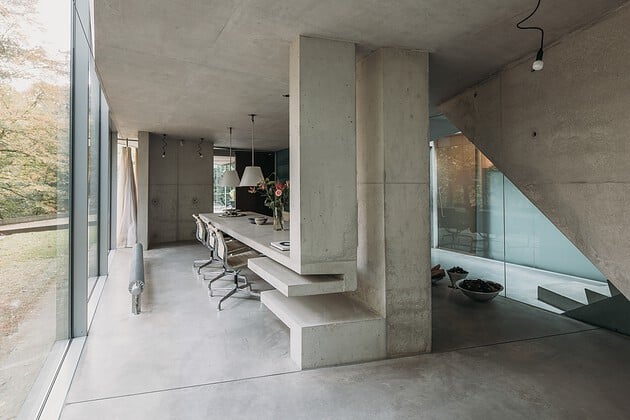
The house features a minimal material palette being rendered almost exclusively in concrete and glass. This translates without distractions the dynamic tectonics of the design. Heaviness and transparency communicate movement as they play off one another. One example is the south-facing curtain wall abruptly interrupted by a concrete obstruction, orienting views and creating a rhythm in the perception of spaces. Concrete cantilevered elements also create interactions between the circulation paths and the living spaces and serve as attention-drawing sculptural elements.
The folding and unfolding of spaces integrate the structure within its natural landscape. Located on a secluded and densely wooded plot, the building uses its glazed surfaces to interact with its surroundings. As the loop inverts, landscape is brought in and the exterior structure of the house turns into interior furniture, an artificial landscape.
Upon opening, the Möbius House gained immediate recognition. It became widely published both in the Netherlands and internationally. In 1999, the Museum of Modern Art in New York opened a major exhibition titled “The Un-Private House” featuring the project. By the time of the opening, Ben Van Berkel and his wife Caroline Bos had already relaunched their office as UNStudio. Despite its modest size, the project remains a turning point in Ben van Berkel’s prolific career, establishing him as an innovator and one of the pioneers of parametric design and serving as a sort of manifesto for the future works of his office.

